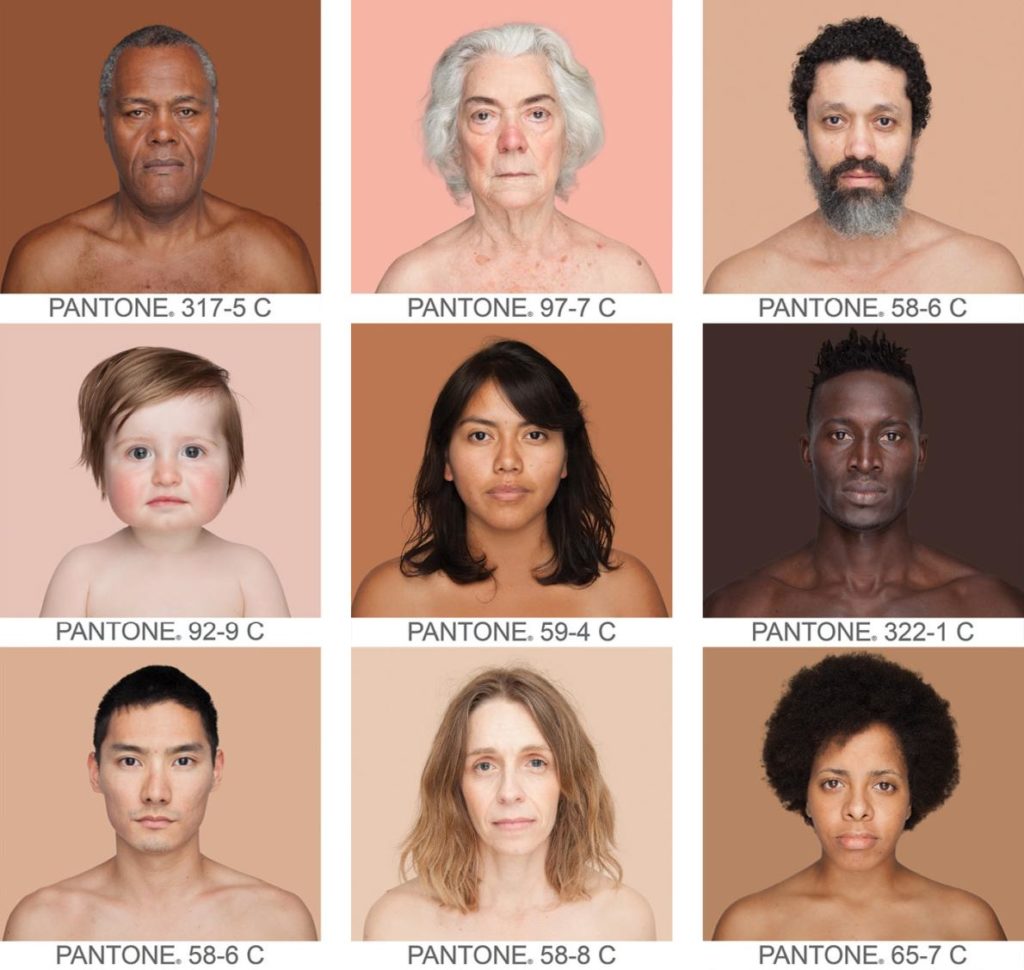Angélica Dass and ‘Humanae’ Project at TED2016 (Photo: Bret Hartman / TED)
Do you think there is a pure ‘white’ or ‘black’ people? Angélica Dass, on her photography project named ‘Humanae’, proves that nobody’s absolutely ‘black’ or ‘white’. They also reveal that race is only a social construction. Angélica Dass is a Brazilian photographer who has taken photographs of at least 4,000 people across the world since 2012. She takes a close-up photo of every person and uses Pantone (color card) that match to the person’s skin as a backdrop of the portrait.
‘Humanae’ is a project in progress that aims to show the range of humans’ skin color spectrum. Below every portrait, Angélica Dass gives a degree of color that is adopted from the Pantone card. This project involves people from 18 different countries (in 2018), with various social backgrounds and ages. The results of this project are a lot of personal portraits and an amazingly wide range of color tones of humans’ skin.
Angélica Dass, “Humanae.” Photo courtesy of the artist.

Source: https://news.artnet.com/art-world/4000-skin-colors-in-pantone-squares-1254683
On TEDtalk 2016, Angélica Dass talked about the background of ‘Humanae’ project. She was growing up in the mixed colors skin family. She associates the colorful skin of her family members with the colors of foods, such as dark chocolate, between a vanilla and strawberry yogurt, cinnamon, hazel, honey, coffee-milk, toasted peanut, and pancake. Inside her family, colorful skin has never been a problem. However, in society, things are different. She faced much discrimination because of her brown tone skin.
She married a Spaniard whose pink skin will get red like a lobster when sunburn. Then, a question started to chase her– “what would be the color of my children?” It triggers her to make a ‘Humanae’ photography project.
She starts with her family and friends, then more people join in this project. Angélica Dass decides to use online space to amplify this project, but then it is also developed in galleries, museums, and public spaces.
Through her artwork, Angélica Dass breaks the dominant power of one race over another. The ‘Humanae’ changes the audience’s perspective on other races. Humans only differ in shades of skin color, but race is rather a social construction. In her website, Angélica Dass says that she understands photography as a dialogue between the photographer to the global audience. She uses her artwork “as a tool of exploration questioning and searching for identity, for each own and others.”
The body that ‘speaks’
‘Humanae’ project reminds me of Judith Butler’s performative theory of assembly. In ‘Humanae’, the subjects of photographs are exercising their performative power to challenge and question the legitimacy of the dominant power. This performativity is not a verbal act, like a speech about human rights, but a bodily act. Their body “speaks” politically.
This kind of performativity is also shown, for example, in the assembly or demonstration by women’s rights movement, LGBT rights movement, environmentalism protesters, and race equality movement. Judith Butler points out that in those demonstrations, they sleep and eat in the public space, built various sharing facilities such as toilets and medical tents, and refuse to be moved. They not only show to the public an equality condition but also their persisting bodies. Through it, they are requesting the world’s attention to what was happening there.
The ‘Humanae’ project shares the struggle against precarity to the global audience. When someone in the middle of a precarious situation, they usually feel life as a slow death, uncontrolled exposure to arbitrary loss or injury, or destitution. For Butler, the opposite of precarity is not security, but the struggle for an egalitarian social and political order. The ‘Humanae’, with its images, struggle against precarity that is caused by race discrimination. They prove that race is a social construction, then, as Angélica Dass says, maybe we can deconstruct this inequality together through art and build a new equality construction.
Finally, the body in ‘Humanae’ project, paraphrasing Judith Butler, ‘never stop to speak and so could not be silenced, sequestered or denied’.

